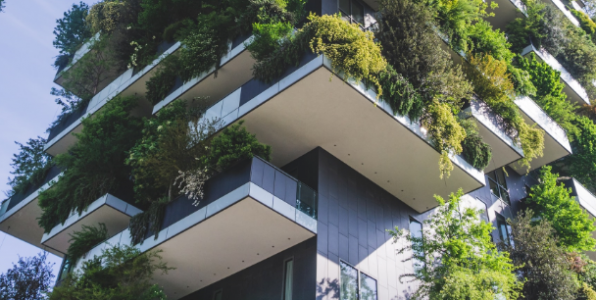Why the LEED Green Building Rating System Is Gaining Popularity

Why the LEED Green Building Rating System Is Gaining Popularity

Green buildings aren’t a new concept, but the LEED rating system has shot to prominence over the past two decades to become a world-leading framework for measuring all aspects of a building’s performance—from construction through operation and even demolition. But what is this green building system and why has it seen such a meteoric growth in popularity?
What is the LEED Green Building Rating System?
LEED, which stands for Leadership in Energy and Environmental Design, offers a framework for greener buildings, aiming to create “safe and healthy places to live, work, learn and play.� The initiative came out of the U.S. Green Building Council (USGBC) back in 1998 and has since spread to become the most widely used and well recognized green building rating system on the world.
It is used for numerous building types and projects of almost any scale, with the rating system being divided into five main categories:
- Building Design and Construction (BD+C)
- Interior Design and Construction
- Operations and Maintenance (O+M)
- Neighborhood Development
- Homes
Each of these categories has strict guidelines that must be followed in order to achieve accreditation. This is done by meeting the specifications of credits in the planning, building, and operation of a project. There are five main areas in which these credits can be earned:
- Sustainable sites
- Water efficiency
- Energy and atmosphere
- Materials and resources
- Indoor environmental quality
And a further four areas in which private homes can achieve credits:
- Locations and linkages
- Awareness and education
- Innovation and design
- Regional priority
There is a mix of required and optional credits within these categories. The perquisites are the minimum that must be done, while the optional credits earn a project varying numbers of points— for example, there is a possible two points available for ensuring a single-family residential home has adequate access to public transport. These points are then used to judge what level of LEED certification is achieved by the project.
There are four LEED rating levels:
Platinum: 80+ points earned
Gold: 60-79 points earned
Silver: 50-59 points earned
Certified: 40-49 points earned
Why is it Gaining Popularity?
LEED has steadily grown since its inception, going from zero projects in 1998 to approximately 700 project registrations per month by the end of 2008. Despite the drop in the housing market at that time, LEED continued to grow, and in recent years has seen even greater uptake with, for example, a 19% increase in LEED-certified homes in the United States since 2017.
This is, of course, its home market, but what set’s LEED apart from other green building rating systems, such as BREEAM, which is common for construction professionals in the United Kingdom, is its growth on the global stage. This is especially true in countries that are developing on large scales, such as China, with almost 1,500 projects totalling more than 68 million gross square meters, according to an announcement last year.
And this increase is no surprise, with 62% of executives reporting that they consider sustainability strategy necessary to be competitive today, and a HSBC report finding that nearly half of UK companies planned to increase their environment-related spending between 2019 and 2021. This included 63% of respondents saying that they will be updating buildings and equipment. There are many factors driving this change, but three core reasons jump out when it comes to the popularity of LEED:
- Consumer demand
- Regulatory changes
- Cost benefits
Consumers are increasingly looking for more sustainable options in the products they buy, the companies they support, and the places they work. According to a 2017 study on corporate social responsibility, a massive 92% of respondents said they were more likely to trust a company that supports social or environmental issues. It is no surprise, then, that this consumer demand is driving construction professionals and the companies that hire them, to the greener solutions that LEED offers.
What’s more, this demand isn’t limited to the corporate world, with increasing pressure being put on local and national governments to pursue greener initiatives. With LEED offering a framework for projects all the way up to the city level, it starts to become clear why it is on the rise.
The pressures aren’t just bottom-up, and new regulations are also contributing to the increasing popularity of LEED. For example, the 2050 low-carbon economy roadmap outlined a path towards a cut of around 90% of carbon emissions from buildings. Similarly, the Energy Performance of Buildings Directive promotes policies that will “achieve a highly energy efficient and decarbonised building stock by 2050� through measures such as ensuring that “all new buildings must be nearly zero-energy buildings (NZEB) from 31 December 2020.�
Another significant factor in the growing popularity of LEED is its potential cost benefits. While it is true that LEED principles can increase the initial cost of a project, the savings they bring can significantly reduce whole-life costs. According to the USGBC, LEED buildings typically use 25% less energy and 11% less water — both of which translate in to money saved.
In fact, estimates from LEED-certified buildings for the period between 2015 and 2018 show $1.2 billion in energy savings, $149.5 million in water savings, $715.3 million in maintenance savings and $54.2 million in waste savings. In addition to savings, there are also some cost benefits in the form of higher rents for LEED-certified buildings and vacancy rates being 4% lower for green buildings.
With all these growth drivers, it is no surprise that the LEED green building rating system is gaining popularity. And this is only expected to continue, with sustainable buildings being the future normal, and LEED standing out as the go-to framework on the global stage.
Comments are closed